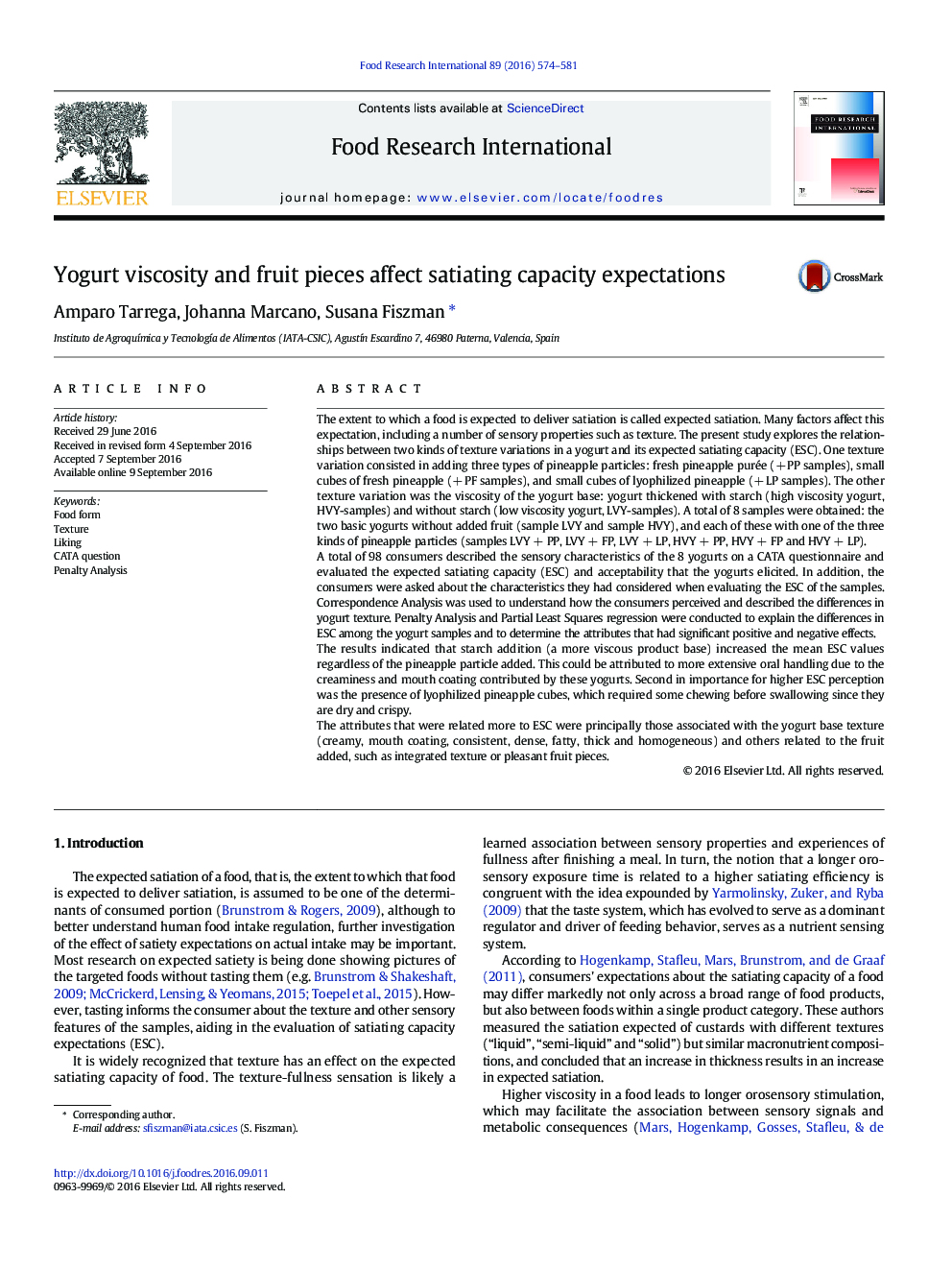| کد مقاله | کد نشریه | سال انتشار | مقاله انگلیسی | نسخه تمام متن |
|---|---|---|---|---|
| 6394857 | 1330629 | 2016 | 8 صفحه PDF | دانلود رایگان |
- Viscosity affected the extent to which yogurt was expected to deliver satiation.
- Fruit form (purée or fresh or lyophilized cubes) modulated satiation expectations.
- Negative hedonic features drastically decreased satiation expectations.
The extent to which a food is expected to deliver satiation is called expected satiation. Many factors affect this expectation, including a number of sensory properties such as texture. The present study explores the relationships between two kinds of texture variations in a yogurt and its expected satiating capacity (ESC). One texture variation consisted in adding three types of pineapple particles: fresh pineapple purée (+Â PP samples), small cubes of fresh pineapple (+Â PF samples), and small cubes of lyophilized pineapple (+Â LP samples). The other texture variation was the viscosity of the yogurt base: yogurt thickened with starch (high viscosity yogurt, HVY-samples) and without starch (low viscosity yogurt, LVY-samples). A total of 8 samples were obtained: the two basic yogurts without added fruit (sample LVY and sample HVY), and each of these with one of the three kinds of pineapple particles (samples LVYÂ +Â PP, LVYÂ +Â FP, LVYÂ +Â LP, HVYÂ +Â PP, HVYÂ +Â FP and HVYÂ +Â LP).A total of 98 consumers described the sensory characteristics of the 8 yogurts on a CATA questionnaire and evaluated the expected satiating capacity (ESC) and acceptability that the yogurts elicited. In addition, the consumers were asked about the characteristics they had considered when evaluating the ESC of the samples. Correspondence Analysis was used to understand how the consumers perceived and described the differences in yogurt texture. Penalty Analysis and Partial Least Squares regression were conducted to explain the differences in ESC among the yogurt samples and to determine the attributes that had significant positive and negative effects.The results indicated that starch addition (a more viscous product base) increased the mean ESC values regardless of the pineapple particle added. This could be attributed to more extensive oral handling due to the creaminess and mouth coating contributed by these yogurts. Second in importance for higher ESC perception was the presence of lyophilized pineapple cubes, which required some chewing before swallowing since they are dry and crispy.The attributes that were related more to ESC were principally those associated with the yogurt base texture (creamy, mouth coating, consistent, dense, fatty, thick and homogeneous) and others related to the fruit added, such as integrated texture or pleasant fruit pieces.
109
Journal: Food Research International - Volume 89, Part 1, November 2016, Pages 574-581
